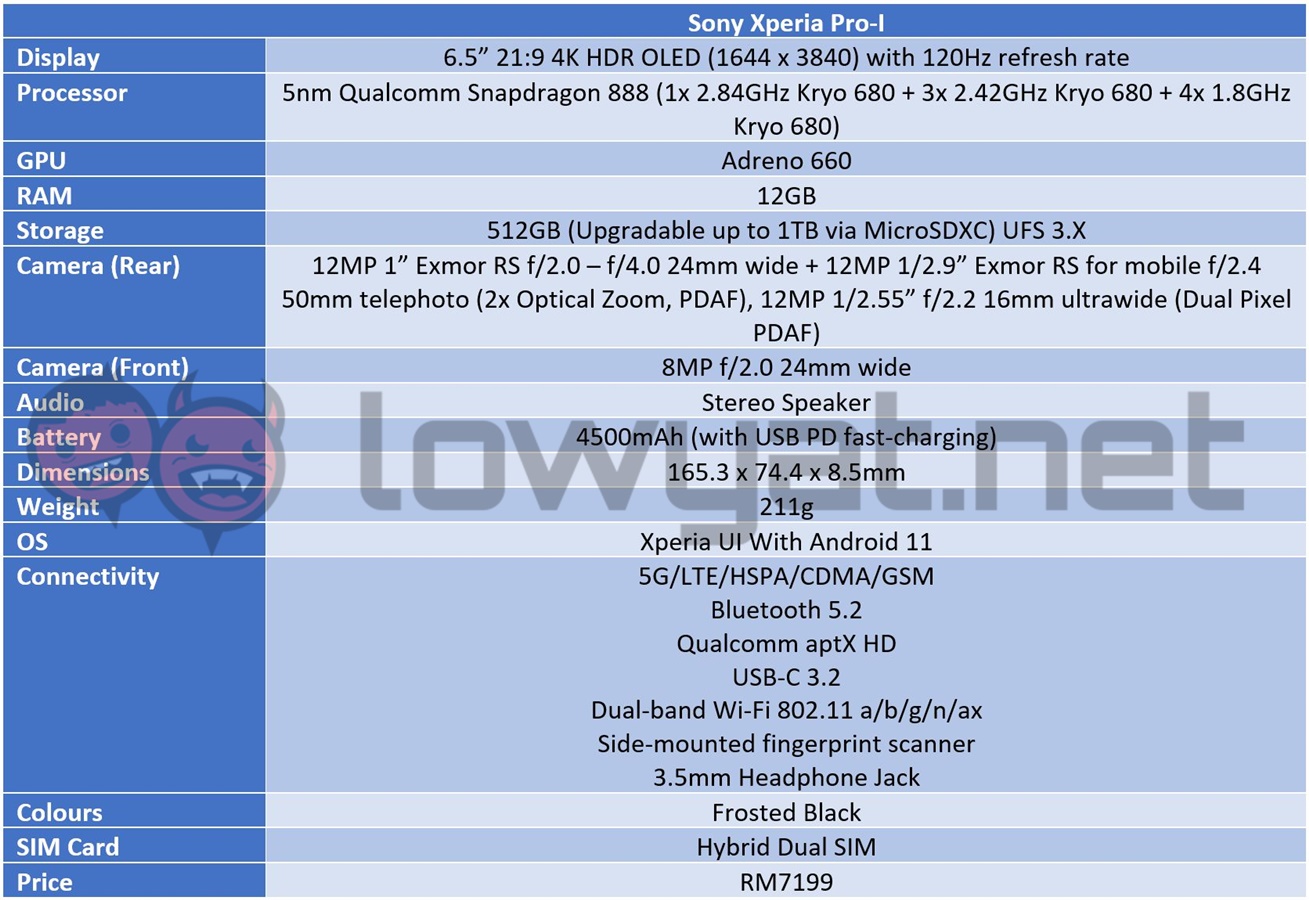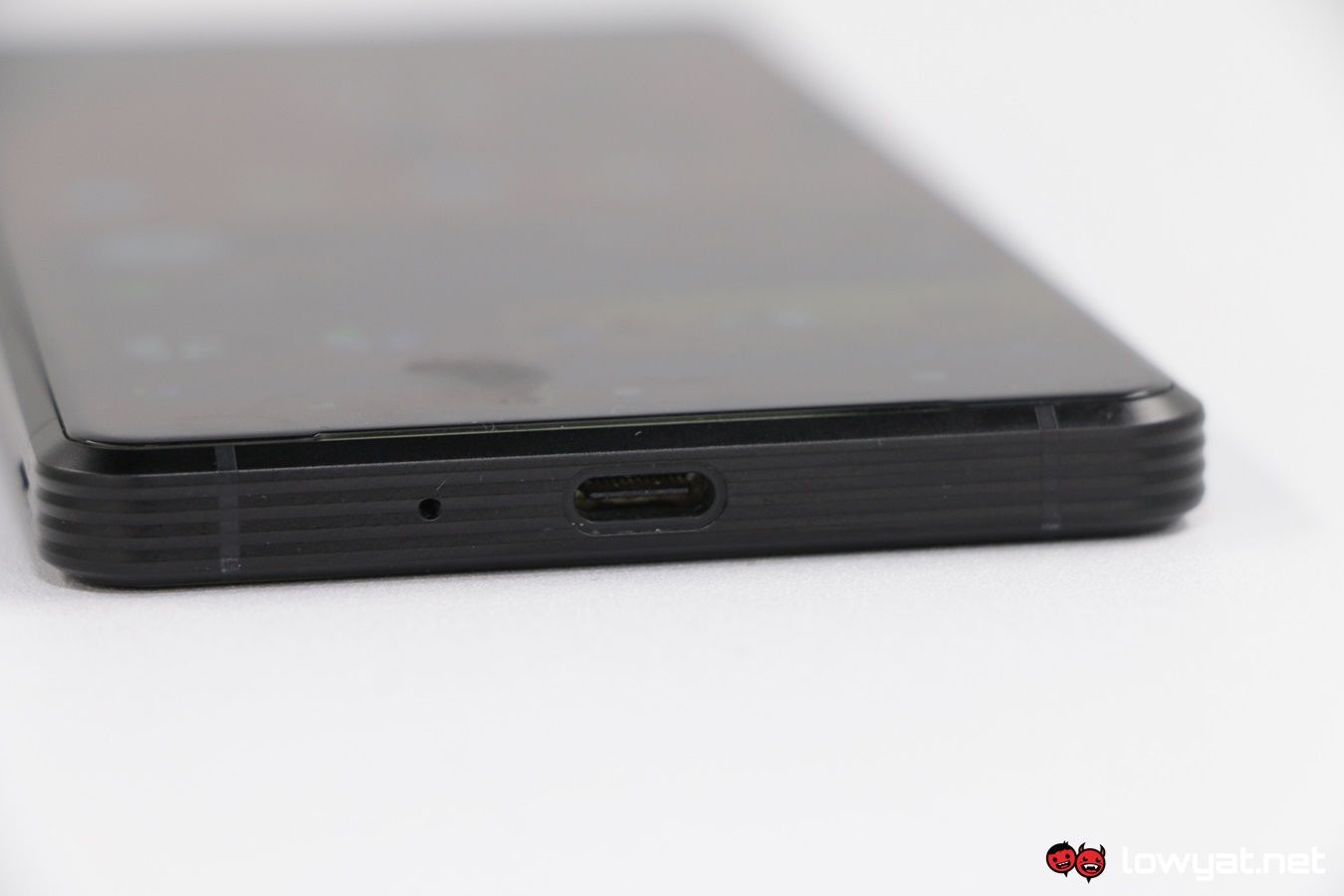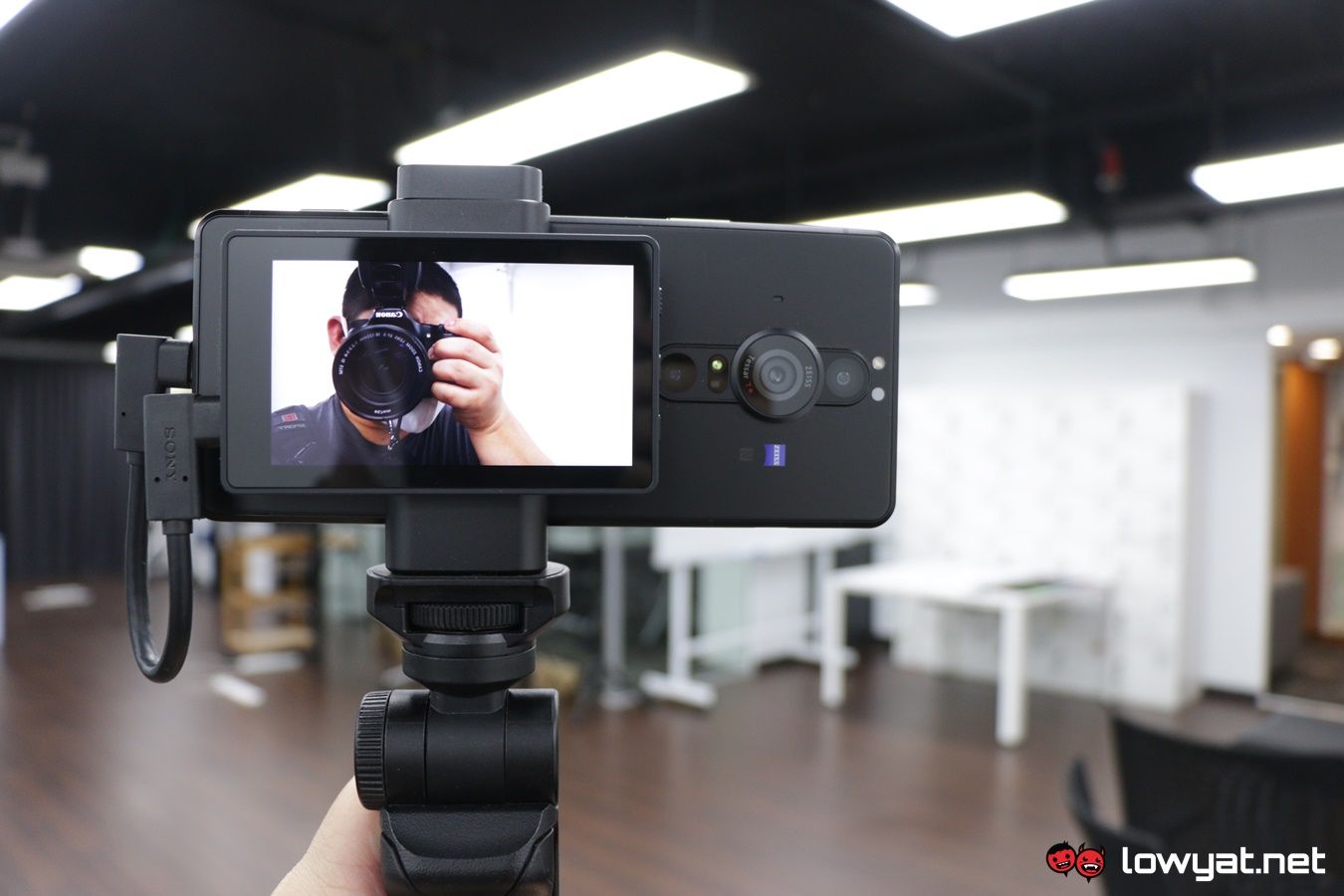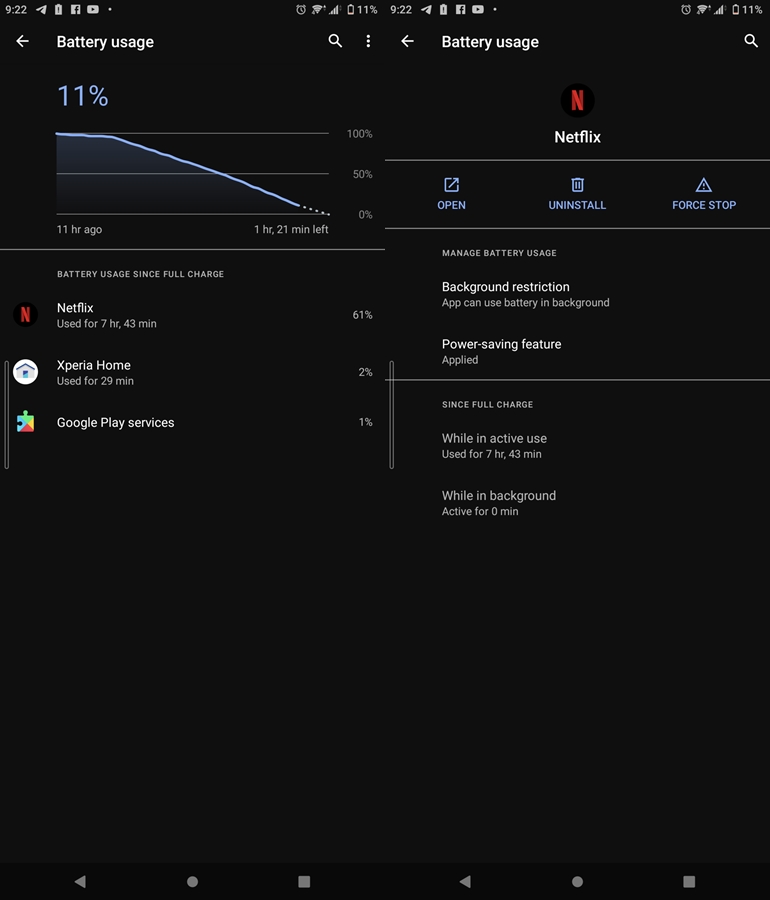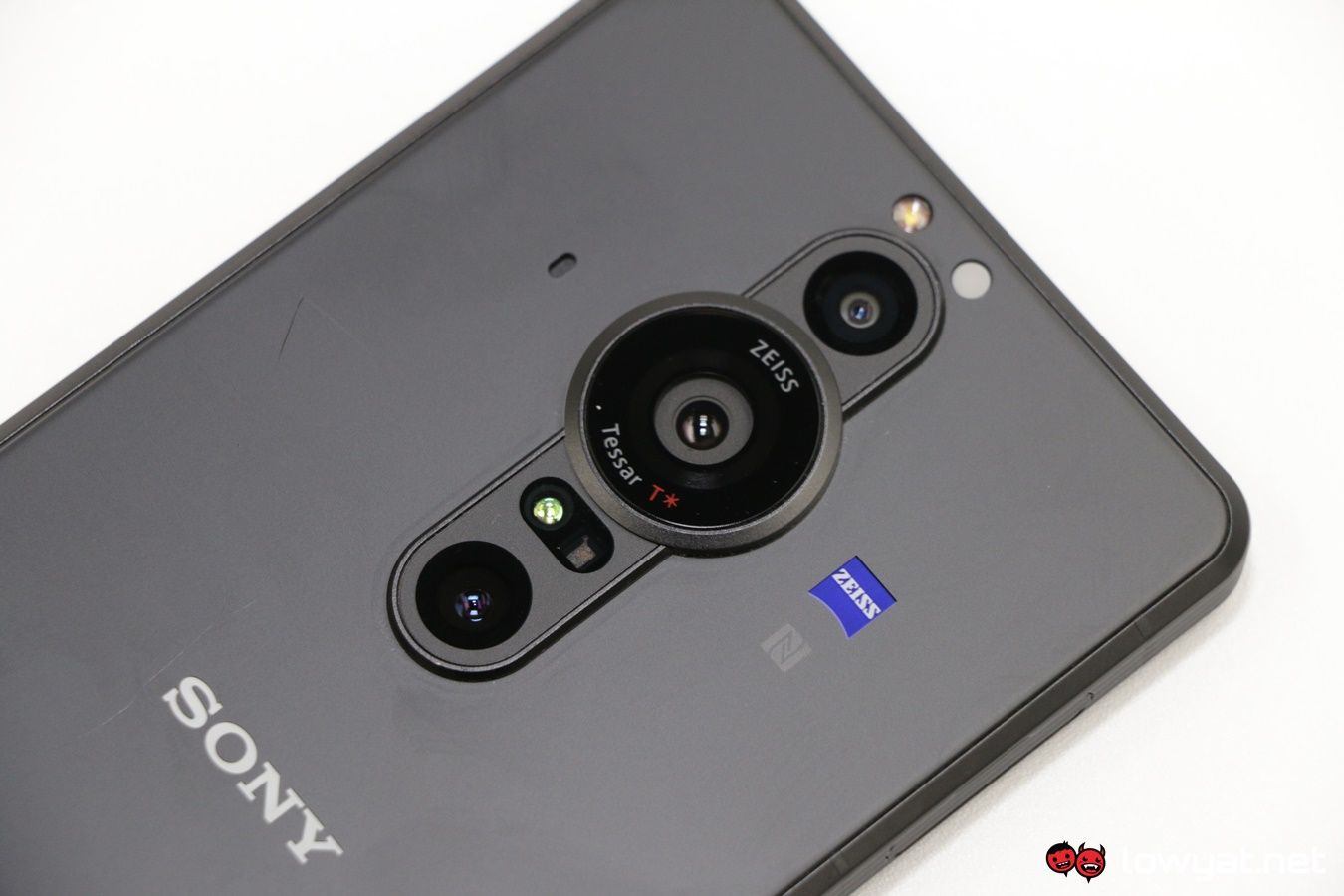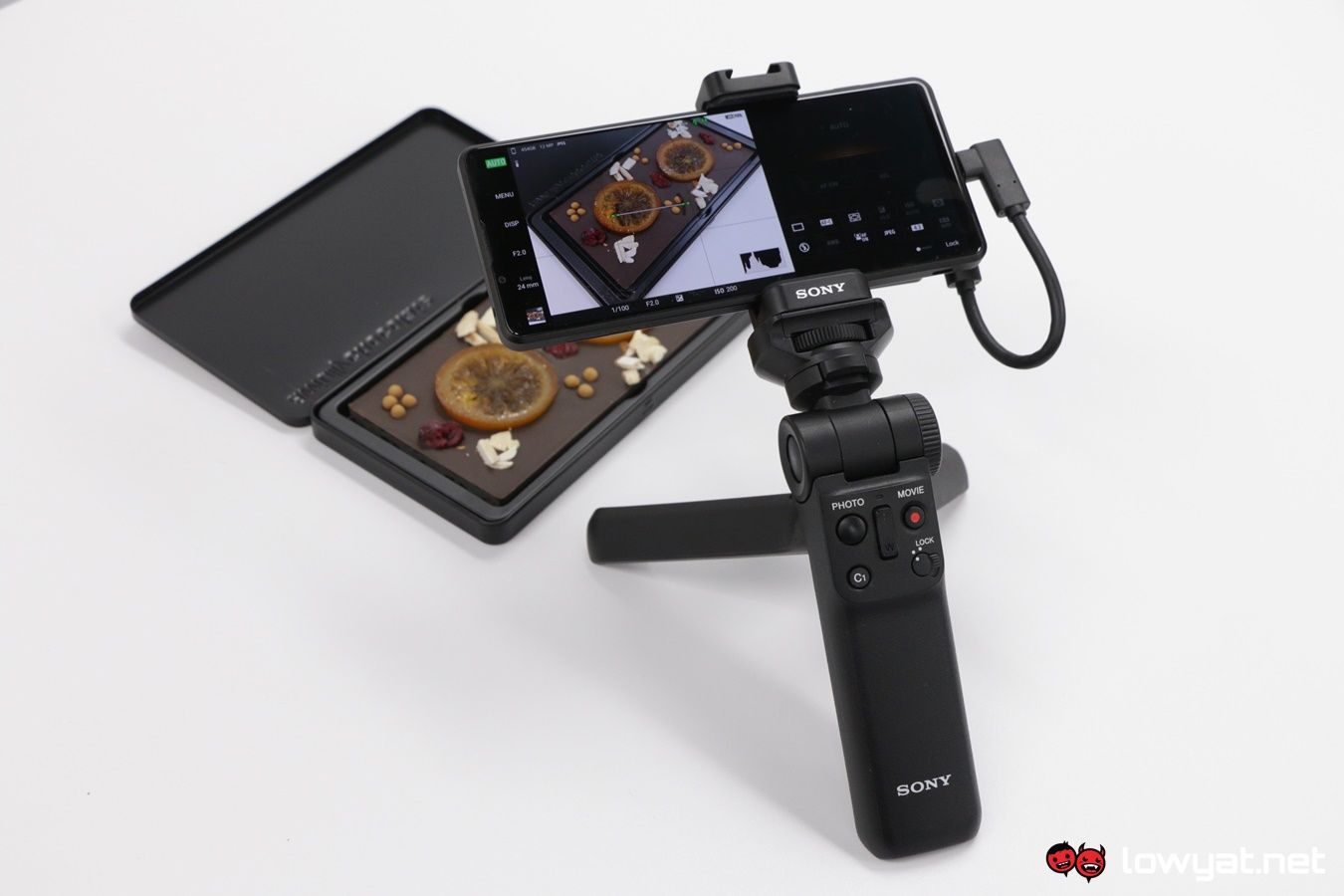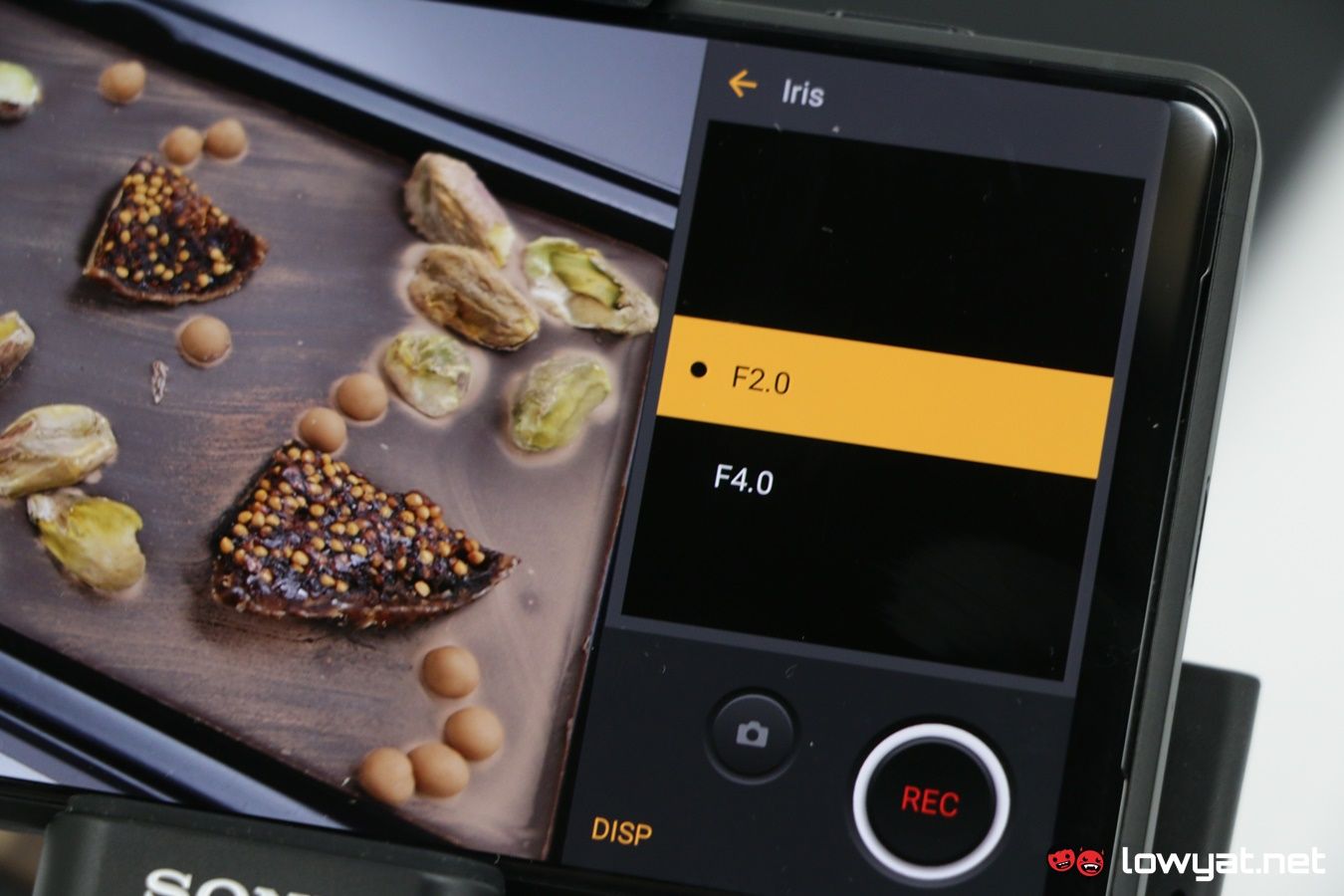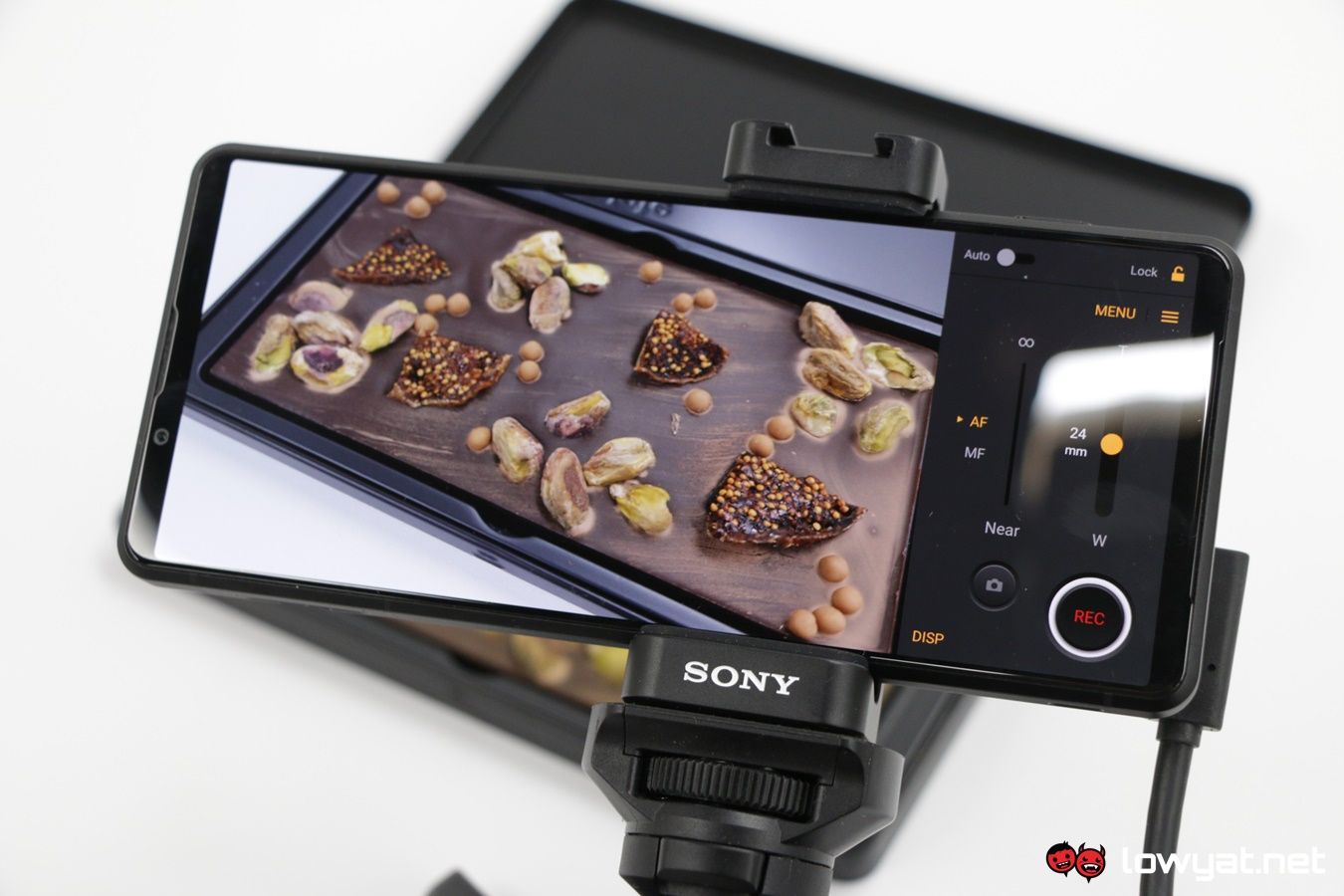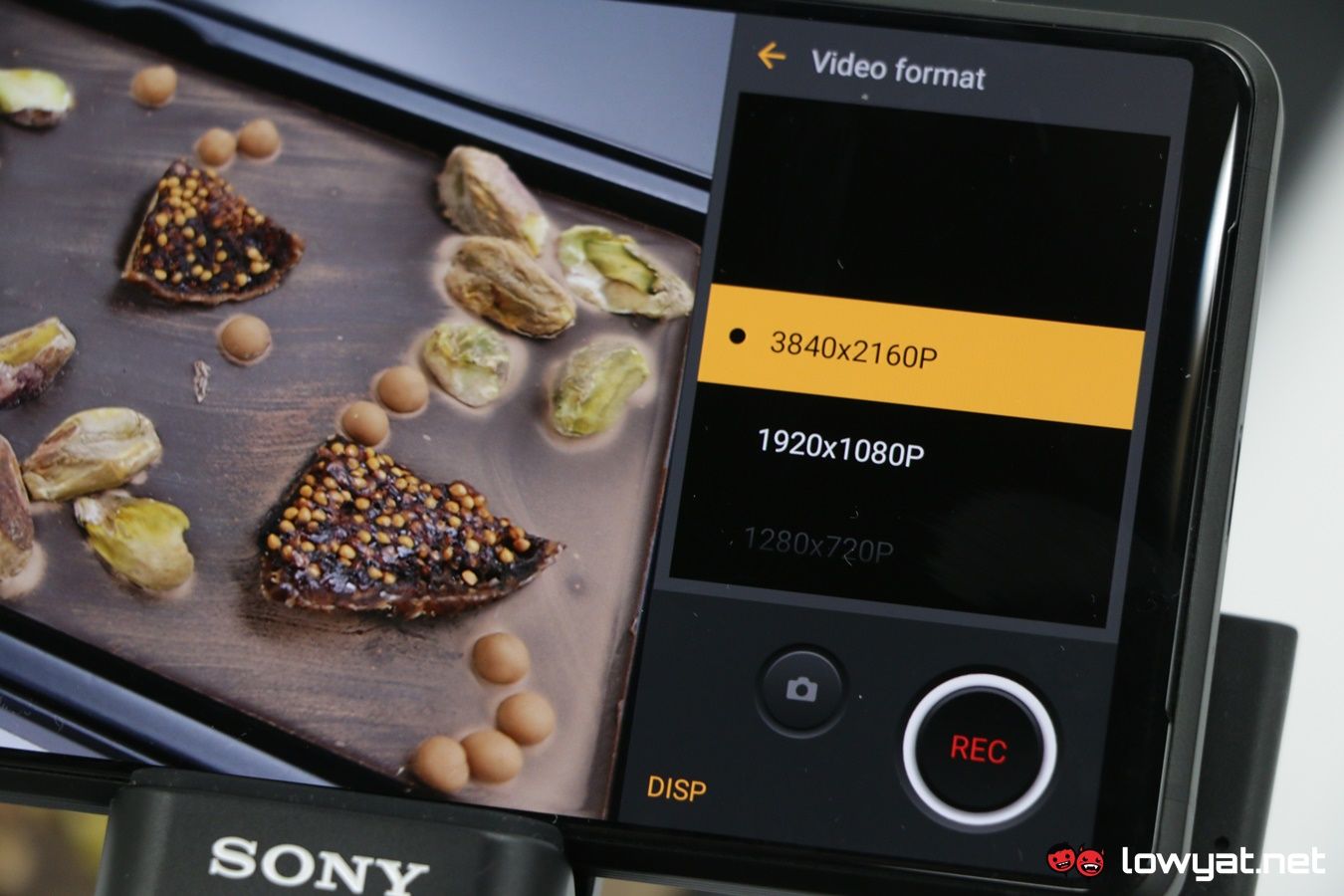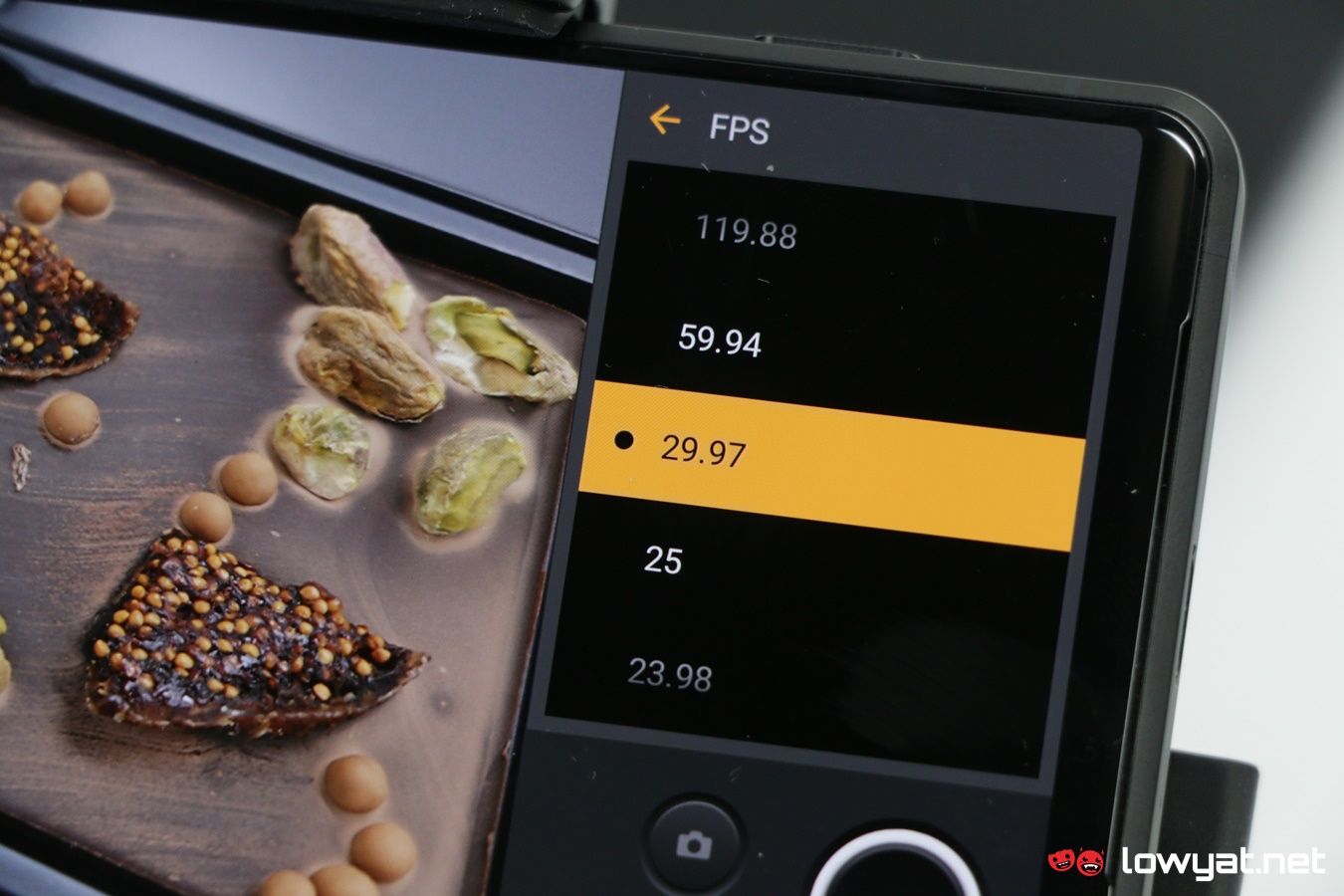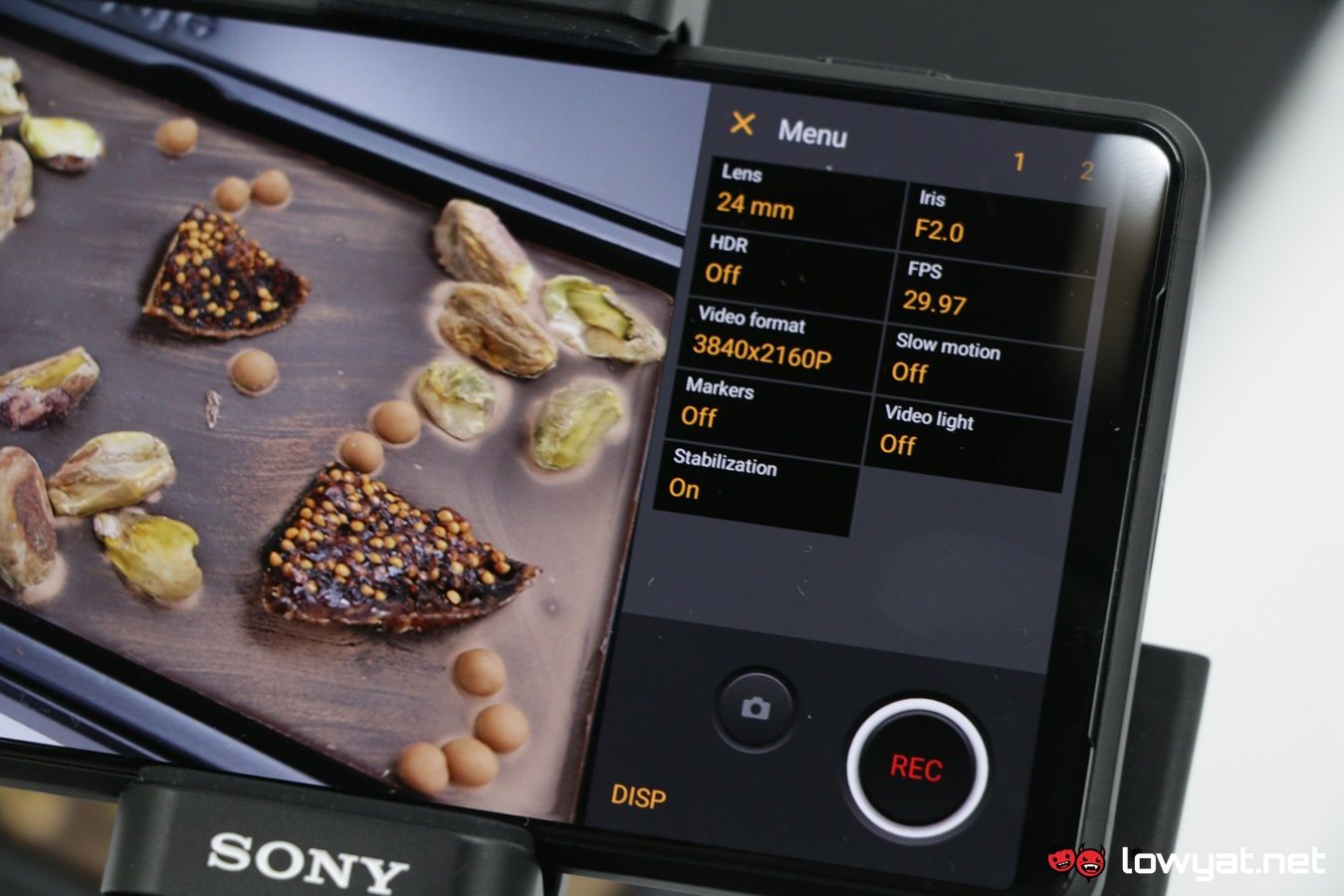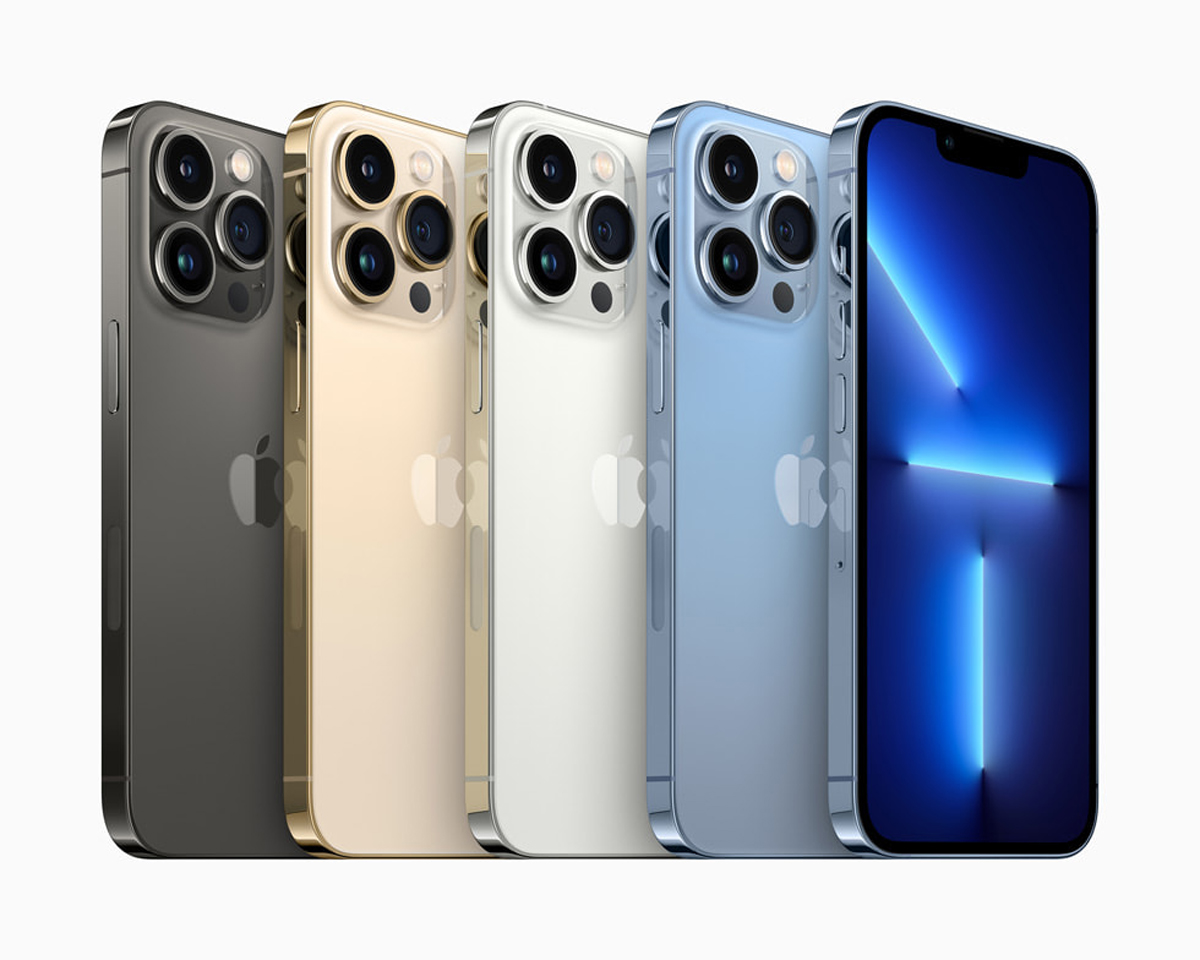Sure, it may look and have the body of the more recent Xperia 1 III, but the star of the show here isn’t the phone’s design, nor is it the display. It’s the main camera module.
Specifications
Design
While I may have just mentioned the similarities between the Pro-I and 1 III, I’m not going to assume that you are all familiar with what the 1 III looks like. So, with that said, let’s run through the feel and design of the Pro-I. The first thing that grasps my attention with the Pro-I is just how solid it feels in my hand, yet somehow manages to feel lighter than your typical flagship, even when it technically isn’t deviating away from the norm. In fact, it’s really just Sony having done a good job in balancing it out.
Ridged for your pleasure.
One physical detail that sets the Pro-I apart from the 1 III is the ridges that form the phone’s borders. It’s clear that they were added in by Sony, both to emulate and create the illusion that the phone is rugged and can be gripped easily, while also sending the message that it is designed primarily for professional photographers and videographers who want a phone that matches their cameras and gear, at least on an aesthetic level.
That same “ruggedness” is also extended to the dedicated shutter button. Instead of ridges, though, it purposely feels a little rougher across the surface, so as to allow the trigger finger to get a good grip while taking snapshots. Right next to it is a button dedicated to starting up the Videography Pro app that comes pre-installed with the phone, instead of Google Assistant which, frankly, makes no sense to me since I can do that by simply holding my finger down on the Android Home button on-screen. Also, as with all Xperia devices, it has a side-mounted fingerprint scanner that also serves as the phone’s power button. Another trend that the Pro-I adopts is the inclusion of the 3.5mm headphone jack. While it can be argued that the majority of smartphone manufacturers have well and truly embraced wireless audio, having this physical feature is more out of convenience for a 3rd party directional microphone, and less of giving users the option of plugging in their wired headphones or earphones. The option is still there, obviously, but clearly, it isn’t a priority. Besides the 3.5mm jack, ports-wise, the Pro-I has the standard USB-C port at the base that supports fast charging.
Stunning 4K HDR OLED display.
Moving on, there is the Pro-I’s gorgeous 4K HDR OLED 21:9 display. Its ultrawide nature notwithstanding, the display is stunning to look at; colours pop out while looking less punchy, unlike Samsung’s own current Dynamic AMOLED 2X technology, and more true-to-life. And thanks to the OLED panel and HDR, contrast ratios are greater and wider, making blacks deeper and whites brighter. In addition, Sony is coupling the display with high 120Hz refresh rate and double the polling rate., providing a smoother, more responsive scrolling experience. At the top, an 8MP selfie camera resides within the bezel.
That last bit brings us to the main attraction of the Pro-I: its main camera. Sony once described the main camera module as having an “RX100 VII sensor inside a slim chassis”, and I’m inclined to believe the brand. Unlike the 1 III, the Pro-I’s entire camera unit is shifted to the middle. Sitting pretty in the middle is the phone’s large 12MP 1.0-inch Exmor RS CMOS wide sensor, along with a 12MP ultra-wide and 12MP telephoto sensors. But more about the camera’s performance below. One major problem with the Pro-I, though? Its asking price of RM7199.
User Experience
While the Xperia Pro-I boasts a longer-than-standard chassis, I am able to tell you that I have no problems wielding the phone. Unlike the smaller Xperia 5 series, the size of the Pro-I actually serves as an advantage. As my daily driver, whipping out the phone from my pocket feels natural and not cumbersome, be it to check my messages, watch videos, or even to take a quick snap of a subject. Not only that, but it also helps that the phone’s back is made from CNC metal and with some hard to grip, glossy material.
Some apps have slight issues, others just simply don’t play nice.
In regards to the software experience, the Pro-I runs with Android 11 out of the box and throughout the review period. Coupled with the powerful Snapdragon 888 SoC and the healthy 8GB RAM, everything ran fast and snappy, apps and programs launched faster than I could blink my eyes, and scrolling at 120Hz is, again, buttery smooth. That isn’t to say that there any caveats, though: one issue I encountered with the Pro-I seemed to rear its ugly head whenever I open up the Netflix app, at which point, the display would go berserk for a split-second, before finally playing the show I’m watching. I suspect this issue has something to do with the phone’s unique 21:9 aspect ratio, but for the most part, the issue isn’t prevalent in other tasks.
Another issue that I encountered app-wise is how some apps just don’t cooperate altogether, such as mobile benchmarks like AnTuTu or GFXBench. Despite my best efforts, neither of the two apps were able to load up. To that end, only the synthetic benchmarks from UL’s 3DMark is provided here. Because the Snapdragon 888’s prowess is well-known, I won’t spend too much time talking about it here. Regarding the thermals of the Pro-I, the phone does surprisingly well in managing and dissipating heat in general; watching YouTube or Netflix, or playing a mobile game over a period of several hours will make the phone feel toasty, but not so hot where you are unable to hold the phone comfortably. That last bit, by the way, only occurs while recording videos. More on that in a while.
Average battery life, even with the 120Hz refresh rate turned off.
As for battery longevity, it’s clear that Sony hasn’t quite perfected battery consumption with a high refresh rate display as well as OnePlus has. One thing I will point out is that the battery consumption rate reflected here was attained with the 4K HDR OLED display running at the standard 60Hz. Used normally, I am able to get a little more than a day of use before it begins crying for the adapter, while binge watching Netflix saw the phone’s battery drain in almost eight hours.
With the screen running at 120Hz, power consumption was far higher and as a result, watching a movie or series can bring the battery level from 100% to 50% in only a matter of hours. As for recharging, the Pro-I takes a little more than an hour to go from single-digit battery life to 100%, but again, this is with an adapter that supports fast charging.
Camera
Finally, we arrive at the star of the Pro-I, its main camera and more specifically, the 1.0-inch Exmor RS CMOS sensor nestled within. If you’re wondering about the hype, it’s because that sensor is virtually the same sensor used in Sony’s RX100 VII compact digital camera. Not only that, but this is also the first Sony Xperia device and smartphone to be fitted with said sensor. For that matter, the quality of the pictures are, as one would expect of a sensor that size, sharp, clear, and deliciously filled with detail. What makes the phone even more impressive is the adjustable dual aperture modes, where you can choose to take photos or videos either at f/2.0 or f/4.0. On that note, I am glad that the Pro-I’s camera software doesn’t actually overdo it with the bokeh effects, unlike what the cameras on Samsung’s Galaxy devices currently do.
On a related note, low-light photography is equally as impressive and, in some cases, the phone’s camera automatically adjusts the overall brightness of the final shot. Having said that, there is also the case of pixel binning, where some images captured in a dimly-lit area tends to look smudgy as if someone had decided to just thumb a section of the picture. As for video: I am not a professional videographer by any measure of the term, but with the Pro-I, I am having a lot of fun pulling some seemingly simple trick shots. No, really: with the help of my colleague, I am able to pull off acts, such as the Hitchcock effect, with such smoothness and fluidity. It’s a really simple bit of manual creativity and yet, when I tried to pull off the same effect with the iPhone 13 Pro, it just wasn’t the same.
Another point to the Pro-I’s Video Pro mode is how, with the 1-inch 12MP wide sensor, it records at 4K30fps, by default. Not only that, you can increase the frames per second up to 120 fps but do note that overall brightness will obviously need some tweaking post-production. While we’re still talking about camera caveats, I believe it comes as no surprise that recording at 4K over prolonged periods causes the phone to generate heat something fierce, and the Pro-I makes that point very clear with a warning note that pops up whenever you want to start recording something. And believe me, it does heat up to a point that it can get really uncomfortable if you’re not using an extension of sorts to hold it.
On a side note, Sony did provide the Vlog ensemble including the phone holder, tripod, and mini display that allows users to record their own personal videos with the main camera module easily, although those are a separate purchase and adding those items to the basket will bring the phone’s already exorbitant price tag well past the RM8000 mark.
Sample Images
Competition
It goes without saying that, if you’re looking out for alternatives to the Xperia Pro-I, there are some very obvious choices here, both in terms of the phone’s costs or the hardware. Here are a couple of choices that I think should be considered.
iPhone 13 Pro Max
If you’re prepared to spend upwards of RM7000 for a phone, the iPhone 13 Pro Max is an obvious choice for an alternative. At its most premium configuration, the phone will set you back RM7599 alone. At that price, you effectively get Apple’s 5nm A15 Bionic SoC, 6GB RAM, 1TB of internal storage, a massive 6.7-inch Super Retina XDR OLED display with 120Hz refresh rate. And a whopping 1TB of storage. For its main camera, you’re looking at a triple-12MP camera setup, comprising wide, utlrawide, and telephoto capabilities.
Samsung Galaxy S22 Ultra
Fresh out of the oven from Samsung’s recent Unpacked, the Galaxy S22 Ultra is essentially a Galaxy Note20 Ultra clone, but with some changes in the hardware department. For starters, the phone is rocking Qualcomm’s latest 4nm Snapdragon 8 Gen 1 SoC, up to 12GB RAM and a maximum internal storage capacity of 512GB (expandable via microSD card slot). As for its main camera, the S22 Ultra has an edge over the Pro-I; it features a 108MP wide sensor as its main, a 12MP ultrawide, and dual 10MP telephoto lenses with 3X and 10X Optical Zoom, respectively. In terms of price, the highest configuration of the S22 Ultra retails for RM5899.
Conclusion
At RM7199, it goes without saying that the Sony Xperia Pro-I is a phone that someone will purchase solely as a day-to-day device. To do that would mean doing the phone and its full 1.0-inch sensor a disservice and a waste of its capabilities.
The Sony Xperia Pro-I is a phone that will have you actively looking for the next picture to take, the next video to shoot.
Throughout the course of this review, it’s not an exaggeration when I say that, with the phone in hand, I was constantly searching for my next subject to snap or a short video snippet to record, even if the latter action is not my forte. It’s not just the phone’s camera system that has me excited; everything, from the phone’s chassis to the textured shutter button made me feel, believe even, that every shot I took was definitely worth the effort and it actually shows in the final product. Having said all that, I will advise you that the Xperia Pro-I is an acquired taste: with what I can describe as a near-vanilla Android experience, it most certainly lacks certain features that other smartphone brands may offer (read: Samsung). For fans of the Xperia series and for avid camera enthusiasts and Vloggers, I recommend giving this phone a try. Photography by John Law.
